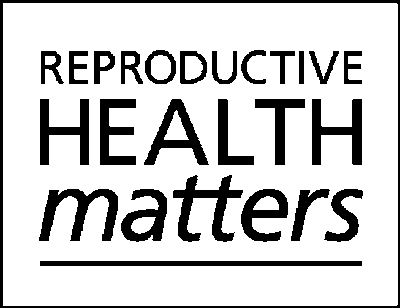Prof
Publikationen Originalarbeiten Blättner B, Kohlenberg-Müller K, Grewe A: Prävention von Adipositas bei Kindern und Jugendlichen: Neue Strategien sind erforderlich. Prävention 29, 42 – 46, Blättner B, Kohlenberg-Müller K, : Evaluation von zwei Adipositas-Programmen für Kinder und Jugendliche. Public Health Forum (51), 25, 2006 Blättner B, Kohlenberg-Müller K, Grewe A: Adiposi

 Reproductive Health Matters 2008;16(31 Supplement):162–172
PII: S 0 9 6 8 - 8 0 8 0 ( 0 8 ) 31 3 71 - 8
Mifepristone–Misoprostol and Misoprostol Alone:
Kristina Gemzell-Danielsson,a Sujata Lalitkumarb
a Professor, Department of Woman and Child Health, Division of Obstetrics and
Gynaecology, Karolinska Institutet, Karolinska University Hospital, Stockholm,Sweden. E-mail:
b Specialist in Obstetrics and Gynaecology, Department of Woman and Child Health,
Division of Obstetrics and Gynaecology, Karolinska Institutet, KarolinskaUniversity Hospital, Stockholm, Sweden
Abstract: Second trimester abortions constitute 10–15% of all induced abortions worldwide butare responsible for two-thirds of major abortion-related complications. During the last decade,medical methods for second trimester induced abortion have been considerably improved andbecome safe and more accessible. Today, in most cases, safe and efficient medical abortion servicescan be offered or improved by minor changes in existing health care facilities. Second trimestermedical abortion can be provided by a nurse–midwife with the back-up of a gynaecologist. Becauseof the potential for heavy vaginal bleeding and serious complications, it is advisable that secondtrimester terminations take place in a health care facility where blood transfusion and emergencysurgery (including laparotomy) are available. This article provides basic information on regimensrecommended for second trimester medical abortion. The combination of mifepristone andmisoprostol is now an established and highly effective method for second trimester abortion. Wheremifepristone is not available or affordable, misoprostol alone has also been shown to be effective,although a higher total dose is needed and efficacy is lower than for the combined regimen.
Reproductive Health Matters 2008;16(31 Supplement):162–172
PII: S 0 9 6 8 - 8 0 8 0 ( 0 8 ) 31 3 71 - 8
Mifepristone–Misoprostol and Misoprostol Alone:
Kristina Gemzell-Danielsson,a Sujata Lalitkumarb
a Professor, Department of Woman and Child Health, Division of Obstetrics and
Gynaecology, Karolinska Institutet, Karolinska University Hospital, Stockholm,Sweden. E-mail:
b Specialist in Obstetrics and Gynaecology, Department of Woman and Child Health,
Division of Obstetrics and Gynaecology, Karolinska Institutet, KarolinskaUniversity Hospital, Stockholm, Sweden
Abstract: Second trimester abortions constitute 10–15% of all induced abortions worldwide butare responsible for two-thirds of major abortion-related complications. During the last decade,medical methods for second trimester induced abortion have been considerably improved andbecome safe and more accessible. Today, in most cases, safe and efficient medical abortion servicescan be offered or improved by minor changes in existing health care facilities. Second trimestermedical abortion can be provided by a nurse–midwife with the back-up of a gynaecologist. Becauseof the potential for heavy vaginal bleeding and serious complications, it is advisable that secondtrimester terminations take place in a health care facility where blood transfusion and emergencysurgery (including laparotomy) are available. This article provides basic information on regimensrecommended for second trimester medical abortion. The combination of mifepristone andmisoprostol is now an established and highly effective method for second trimester abortion. Wheremifepristone is not available or affordable, misoprostol alone has also been shown to be effective,although a higher total dose is needed and efficacy is lower than for the combined regimen.